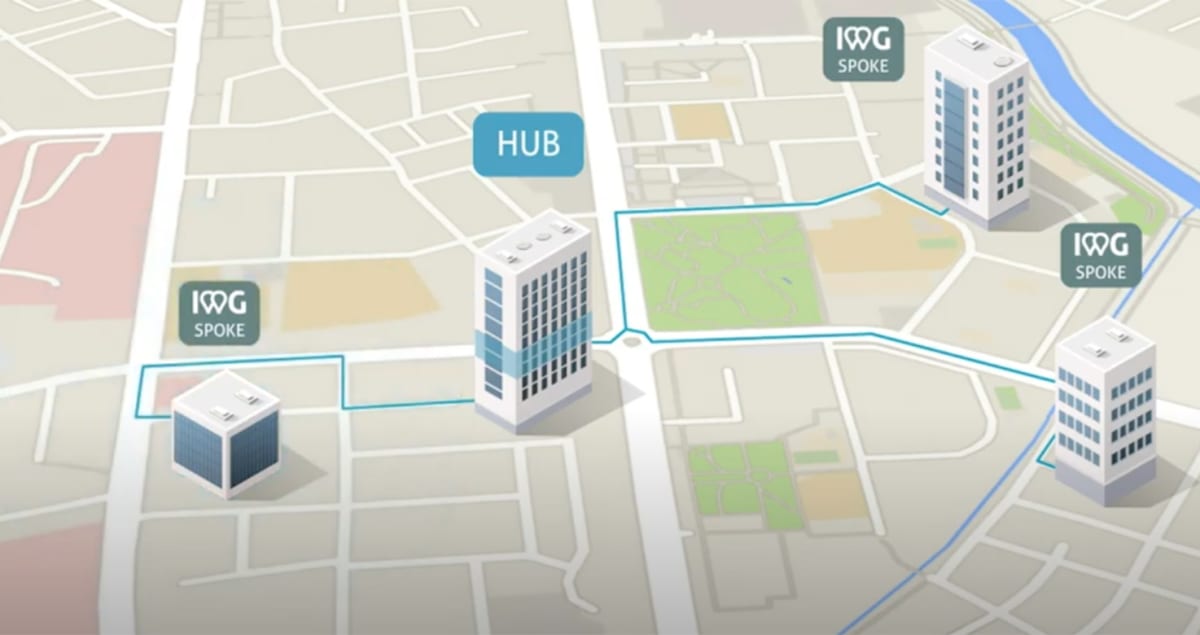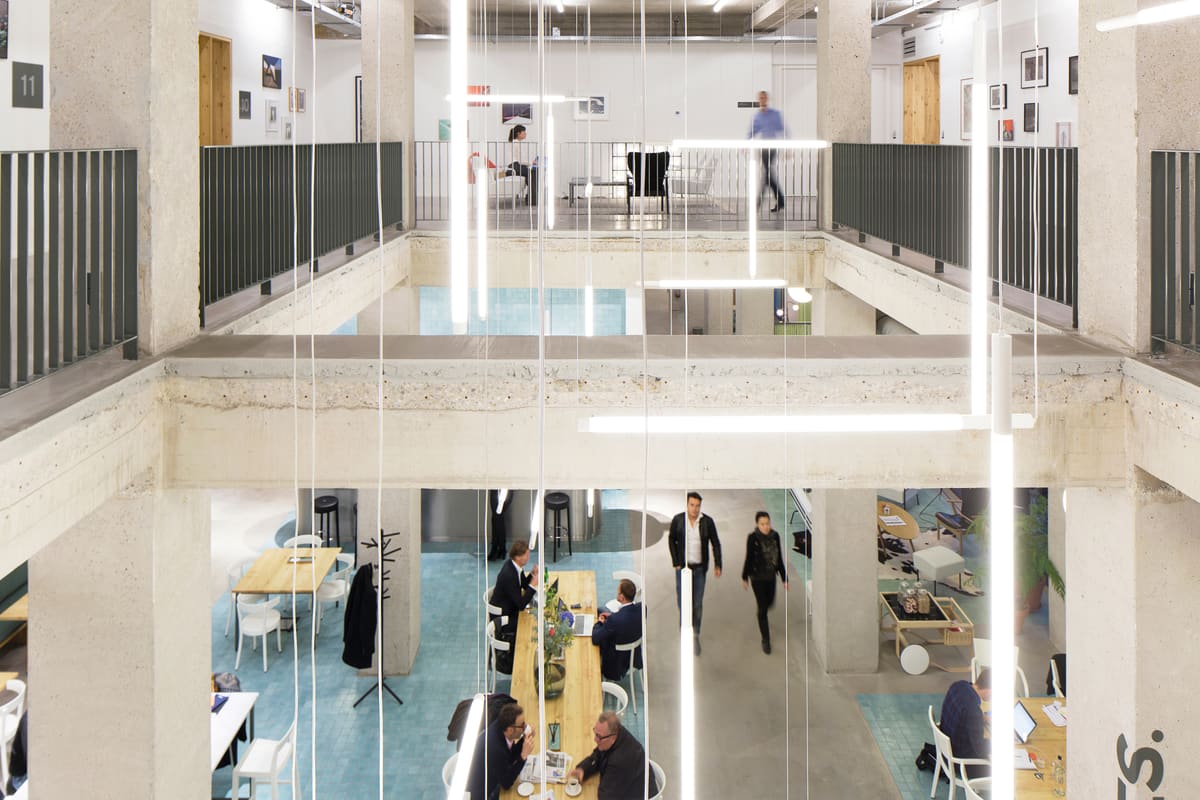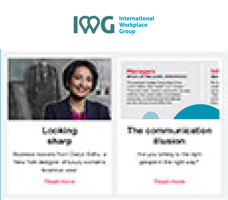As businesses worldwide prepare for a sea change in the way we work, many leaders are exploring the practicalities of a ‘hub-and-spoke’ approach.
Even before the pandemic set off today’s work-from-home revolution, corporate trends pointed towards a new way of working: the hub-and-spoke model, where a main office (hub) exists, but employees use satellite offices (spokes) or workspaces that are within easy reach during the working week. Here, the benefits are numerous, as many have realised over the last year, with increased flexibility for all parties being a key advantage.
At a February Q&A with Bisnow, IWG’s CEO Mark Dixon spoke of a golden age for the world of hybrid working. “We’re going from the worst time for flexible offices to a time that will be the making of the industry,” he said. “Because there’s been a sea change in how people are supporting their workers and using their offices.”
Dixon predicts that, in the coming two or three years, up to two-thirds of organisations will adopt this model of having staff work from a central HQ some of the time, but remotely for the remainder, with the option of using local, flexible workspaces closer to home.
So how are companies gearing up to make the change?
The hub-and-spoke pioneers
Several major firms are already striking out into the world of hub-and-spoke. Nippon Telegraph and Telephone Corporation (NTT) has signed a groundbreaking deal to provide its 300,000 employees access to some 3,500 IWG offices worldwide. This follows IWG’s major agreement with Standard Chartered bank, with 95,000 global employees, reinforcing its leading position in the hybrid workspace sector.
In Norway, EY is using IWG centres as both hubs and spokes. The company will base its new HQ at a Spaces centre in Oslo, while all of its employees in Norway will have access to IWG meeting rooms, workstations and coworking facilities across the world.
Also appearing at Bisnow’s Q&A, Standard Chartered’s Head of Talent, Tanuj Kapilashrami, outlined the thought process behind its move to hub-and-spoke – as well as the considerations for companies looking to follow suit.
“The data was clear – more than 70% of our colleagues globally wanted to work flexibly at least 50% of the time going forward,” said Kapilashrami. “Flexible working, for us, is not just about home working. We absolutely recognise the value that colleagues can have in collaborating with each other, problem-solving, innovating. We want to give our colleagues the option to be able to come together near their home locations, too.”
A new age of leasing
Of course, it would be impossible for this change to happen overnight. The lease structure of existing office assets will give owners time to adjust to a new reality, explains Mark Dixon. “It will be a medium burn,” he says. “If people could just get out of their leases then it would be a big bang, but that isn’t possible.”
Businesses that have long-term leases will therefore have to accept that their current HQ must remain for the time being. That doesn’t mean its function can’t evolve. This hub office can be transformed into more of a collaborative space, where people can meet, train, and innovate in a flexible and safe environment. It’s also where businesses can best express their values and vision and promote their company culture.
Corporations such as BP, for example, are reviewing how they use their permanent workspaces after finding they have around 20% more office space than they will need post-pandemic. They now expect to move to a more hybrid working style, reorganising their existing long-term real estate in order to adapt. This will result in fewer permanent office desks for individuals but more “flexible meeting areas and collaborative team working spaces”.
Making workplaces more convenient
When mapping out your hub-and-spoke network, analysing employee addresses can help ensure offices are available in the most appropriate locations, choosing areas with good transport links or most convenient for clusters of employee homes. Dixon reports that IWG has seen a surge in interest from UK companies wanting access to smaller hubs near commuter connection points, such as London’s M25.
It’s also important to consider the demographics of your workforce. For example, younger employees might be more likely to favour centralised office locations for their proximity to restaurants and entertainment venues.
IWG is helping businesses map the best locations for satellite offices as part of its Enterprise Plan. Fatima Koning, IWG Group Chief Sales Officer, explains: “We help companies overlay their network of locations on top of our dots on the map. In this way, we can help them analyse how they can achieve smart growth and how they can reduce costs by moving some of their real estate into flexible solutions.”
For companies with a more transient workforce, the Enterprise Plan is able to track their teams’ activity to understand how their employees are using IWG’s network – which locations they’re visiting and when, how long they spend there and what type of workspace they’re using. Providing monthly reporting enables customers to make data-driven decisions about their workspace requirements.
Monitoring productivity remotely
Then come the logistics of managing the work taking place in these spoke offices, and ensuring employees have access to everything they need to work effectively. From confidentiality to security, along with IT support and fears around waning productivity, remote workers will have to be closely monitored – with individuals and teams feeding back on how the change has affected their work.
A recent study by academics at Cardiff University and the University of Southampton found that managers often fear that remote workers will ‘shirk’ and productivity will drop as a result. Some employers have turned to controversial surveillance software, such as Hubstaff, to monitor remote workers’ activity, tracking everything from hours worked to keystrokes, mouse movements and websites visited.
However, research by the Chartered Institute of Personnel and Development (CIPD) suggests that workplace surveillance can damage trust between managers and employees – something that should be avoided in order to make the hub-and-spoke model work. When measuring productivity, companies should therefore move away from a focus on tracking factors such as hours worked, and instead monitor output.
Technology can be used in other ways to more efficiently manage remote workspaces: occupancy sensors, for example, can be installed to monitor areas that are most popular, which rooms are underused, and which teams use more space than they’re allotted. Businesses can use this data to make decisions on whether to invest in additional spokes.
Benefiting the triple bottom line
The hub-and-spoke model is beneficial to a company’s bottom line in several ways – not least because it often means downsizing or relocating expensive city centre HQs and reducing fixed real estate commitments. A pre-pandemic State of Telecommuting report found that companies saved an average of $11,000 per year for every employee working remotely 50% of the week. During the Covid-19 pandemic, it’s estimated that US employers are saving more than $3bn per day by allowing employees to work from home.
By downsizing to a smaller hub, companies are also reducing their carbon footprint, saving energy used on appliances, air conditioning and heating – not to mention the emissions notched up on employee commutes. A Carbon Trust report found that an increase in remote working could cut costs to employers and employees by £3bn a year, and save more than three million tonnes of carbon annually.
The key thing for companies, says Dixon, is retraining their workforce to work efficiently, productively and remotely using the technology that all corporations have at their fingertips.
“The big change going forward will be: how do you train people within a company to make better use of their time?” he says. For IWG, he adds, the focus will be on providing flexible workspaces that suit the growing demand for remote – but high-quality – work. “How do we add the physical to the digital? That is our role.”
IWG has been helping businesses like yours with corporate flexspace solutions for the last 30 years. Find out how we can support you today.






